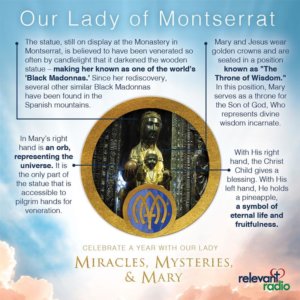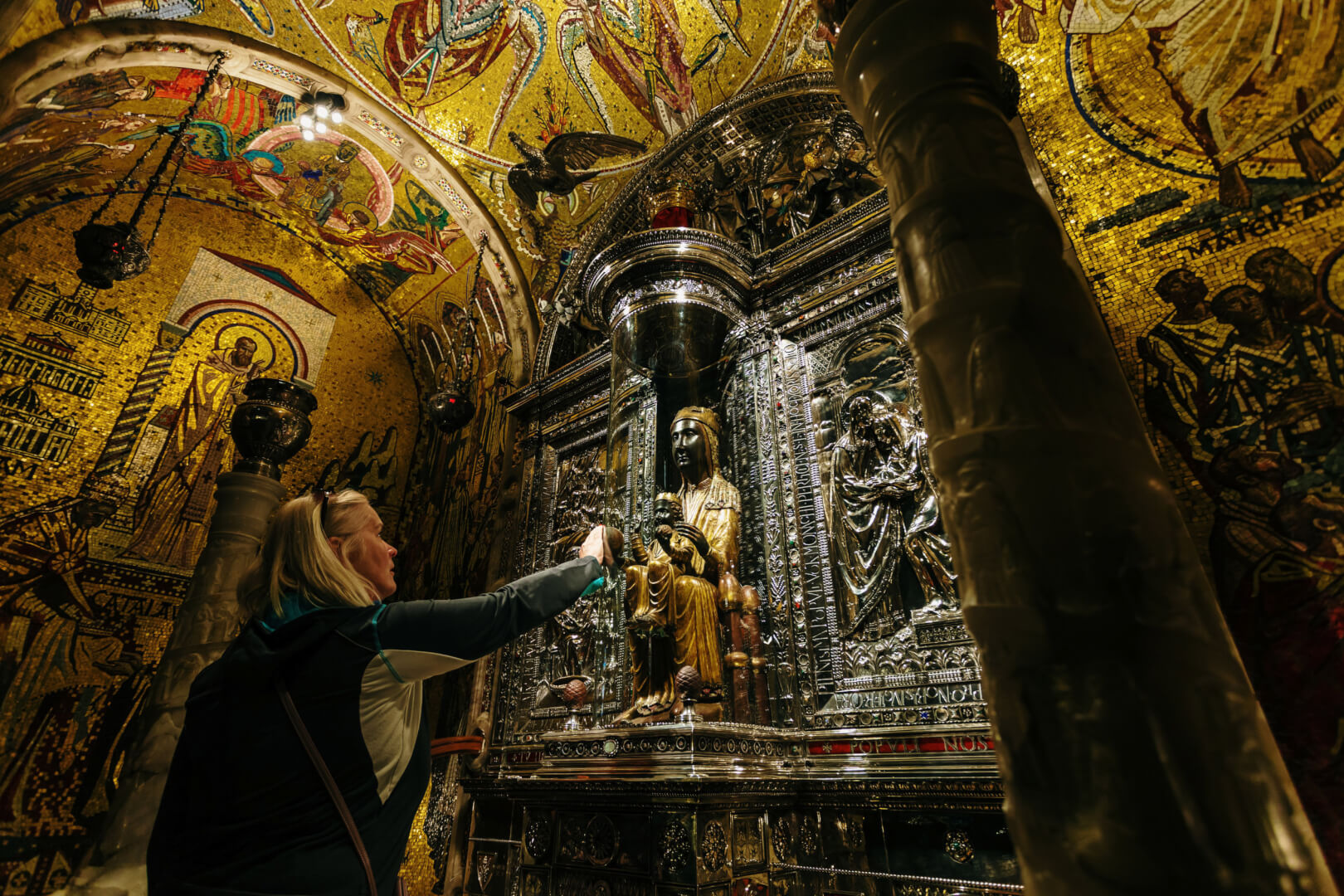Today we celebrate Our Lady of Montserrat, a mysterious statue hidden away in Catalonia, Spain, for nearly 200 years.
“La Jerosolimitana”, or “the native of Jerusalem”, as she was first called, was handcrafted out of wood, decorated colorfully, and gilded with gold around 50 AD. It is commonly believed that the image was given as a gift to Saint Eteri, a disciple of Saint James the Great and the Bishop of Barcelona. Centuries later, this three-foot-tall image of Madonna and Child became the beloved icon of Catalonia and the surrounding regions.
Candles surrounded the statue day and night; their ever-present smolder is believed to have turned “La Jerosolimitana” into “La Moreneta”, or “the dark-skinned one”. The smoky flames browned the Madonna and Child’s complexion and restorers have painted their skin dark to match ever since. She’s revered as one of several Black Madonnas worldwide.
It was only for safekeeping that this staple devotion was hidden away; in 718 when the Saracen invasion reached inland to the region of Catalonia, Christian resistance kept the army at bay for three years. As their defensive force began to dwindle, they prioritized protecting their holy items, especially their beloved Marian statue.
The high, isolated peaks of nearby Montserrat (in Catalan, “serrated mountain”) made passage treacherous and invasion very difficult. This hardly-accessible series of narrow mountains and even narrower mountain passes had an abundance of natural caves – a perfect hiding spot for Catalonia’s precious treasure. But after the threat had passed and Christianity began to re-emerge, La Moreneta’s hiding spot proved almost too perfect: she remained hidden, her location a mystery for almost 180 years.
In 880, a group of shepherds near Montserrat reported seeing visions of an image much like their beloved statue nearby after staying in the mountainous caves, and as news spread, others came to investigate. After six consecutive Saturday visions and almost two centuries of being lost, Our Lady of Montserrat was finally found.
The people were so overjoyed they sought to bring the image in procession through the valleys which held the kingdoms of Valencia and Mercia – but it seemed that the Blessed Mother had other plans; no matter what was tried, Our Lady of Montserrat wouldn’t move off the mountain. Even when the Benedictines moved into a monastery, which still exists today, local tradition tells us that they had to build around Our Lady of Montserrat at her post!
Saint Ignatius of Loyola, founder of the Jesuit order, visited Montserrat set on being a battle hero; after a night of prayer, he left his sword by the altar, now determined to become a spiritual warrior. Since then, many saints have been among pilgrims to this site. Similar statues and replicas can also be found in Torreciudad, Tortuga, and Trinidad to name a few. But one thing is for certain: if you’re looking for Our Lady of Montserrat, you’ll always find her keeping watch from her mountainside of Catalonia.


Our Lady is celebrated under many names, from popular apparitions to small-town titles. Each reveal something different about the Blessed Mother to us – and affirms what we already know of her love and intercessory power! Deepen your devotion to Our Lady with Miracles, Mysteries, & Mary, a monthly collection of stories, Church teaching, reflections, and so much more – guaranteed to expand your knowledge of Our Blessed Mother. Sign up today to receive this Marian content, right to your inbox, and check out our archive page to catch up on our year of Our Lady!



